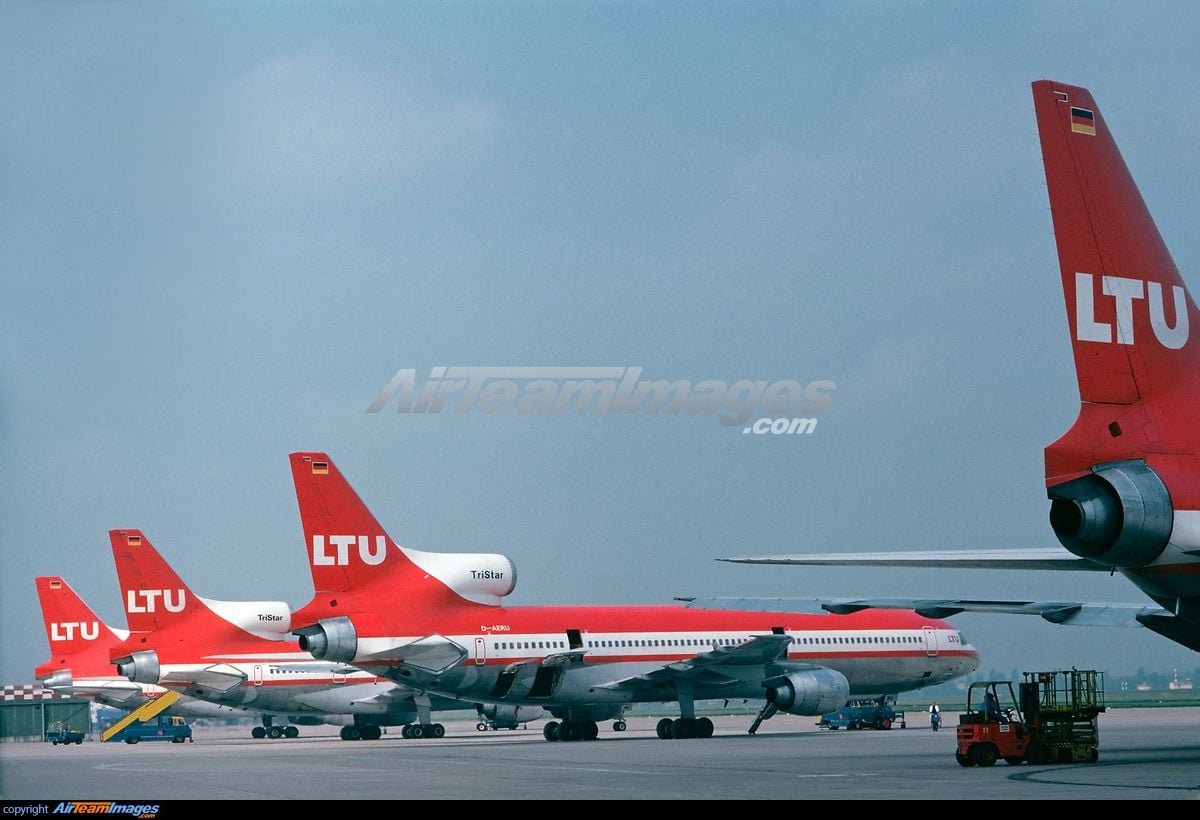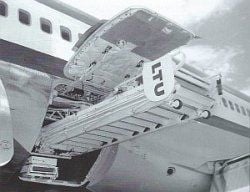Originally Posted by
PAXboy
The system stored in the cargo hold must have weighed a fair bit. No surprise it did not catch on.
The picture of the LTU Tristar looks like a baggage belt, again, heavy.
Yes there was a lot of weight.
In those days the arrival of an aircraft with more than 300 passengers at a small Mediterranean airport not yet equipped to handle such a large volume of people which often meant congestion of passenger and ground handling facilities.
To combat this problem both Court Line and LTU took up the option of integral rear airstairs in the main aft cargo hold, which could be extended without outside assistance.
The TriStars also came with electric baggage-loading belts at all 3 hold doors for bulk loaded luggage. (No ULD-AVE's were able to be used then)
However, these features meant additional weight and thus increased fuel and maintenance costs so, as the holiday airports gradually developed, these features were removed.
Both Court Line and LTU removed the cargo hold Rear airstairs during the winters when the planes went off to do long haul, such as to UVF ANU and MBA.
They never got put back on LTU after around a couple of seasons use,
and of course Court Line then went under.
The LTU picture in my OP shows the Forward air stairs 'whilst in motion' as it unfolds to open down to the ground.
Only 5 L1011's were ever fitted with this.
All were -1's of the PSA order for 5, of which they only flew 2 in service.
Cathay Pacific were due to buy this pair of -1's, but did NTU in the end.
CX in the end ordered a brand new pair of HGW -100's for 1975
(which were CX's only
brand new Tristar orders).
I was always surprised as to why LTU did not snap up Court Line's pair of -1's in 1974.
Those 2 also sat stored in the Desert until Cathay eventually took them on in 1977.
The other 3 ex PSA -1's sat unsold until LTU did a deal with Lockheed in early 1977 to take all 3 in Part Exchange for LTU's remaining -1 option, and to sell and lease back their first -1,
D-AERA to Eastern Airlines.
One of the PSA trio, D-AERU was converted to a -100 TriStar and was delivered to LTU later during 1977.
The original TriStar -1 was possible to have a conversion to the high gross weight L-1011-100, which in this case gave the aircraft the range to fly DUS-JFK non-stop.
Pacific Southwest Airlines (PSA) had ordered five L-1011s for its high-density California routes in 1970.
After receiving two in 1974 they were soon subsequently grounded due to their high operating costs when fuel prices had tripled, the airline then refused to take delivery of the final three it had on order.
This meant that Lockheed was stuck with three TriStars built with an interior designed specifically for PSA, including a lower-level passenger lounge converted from the cargo hold and lower deck galley areas, and also with an airstair, making the models
incredibly difficult to sell on.
Despite filing a lawsuit against PSA, Lockheed worked with the airline to market the redundant aircraft, creating a full-colour brochure in June 1975 which promoted their specific design for short-haul high density operations or IT charters.
Included were provisions for the installation of the galley areas back up onto the main deck, although no offer was made to remove the downstairs lounge configuration.
A sale to Avianca Airlines of Colombia fell through in August 1976.
Discussions then began with LTU and in October that year an agreement was made to return its two initial TriStar -1s and replace them with the three new undelivered jets.
This would give the German carrier the high-density layout perfect for its charter operation, with a consistent standard of cabin configuration across the fleet.
As the new TriStars arrived LTU was able to expand into more long-haul operations, launching flights to Miami in November 1976.
Flights were also added to New York and Los Angeles in May 1977, with Sri Lanka and Bangkok joining the network as its first Asian destinations in November 1977, followed by the Maldives in 1981.
The L-1011 Tristar became LTU’s sole aircraft type suiting both the peak destinations such as Palma Ibiza Rhodes and Las Palmas, plus for long haul too.
Despite reservations about the lower-deck lounge, these remained in use with LTU until 1984 when they were removed by Eastern Airlines engineers in Miami.
Known as the ‘Club Lounge’ the exclusive area was reached by a staircase from the forward cabin and had a leather-framed bar, sofa style seats and, as there were no windows, two illuminated picture frames showing an exotic sun-kissed Spanish landscape.
It could accommodate 16 passengers who had the chance to upgrade for a small fee with meals served on china, extra snacks and free alcoholic drinks.
 Unfolding
Unfolding
 Forward airstair in use
Forward airstair in use
 Rear Hold airstairs LTU
Rear Hold airstairs LTU